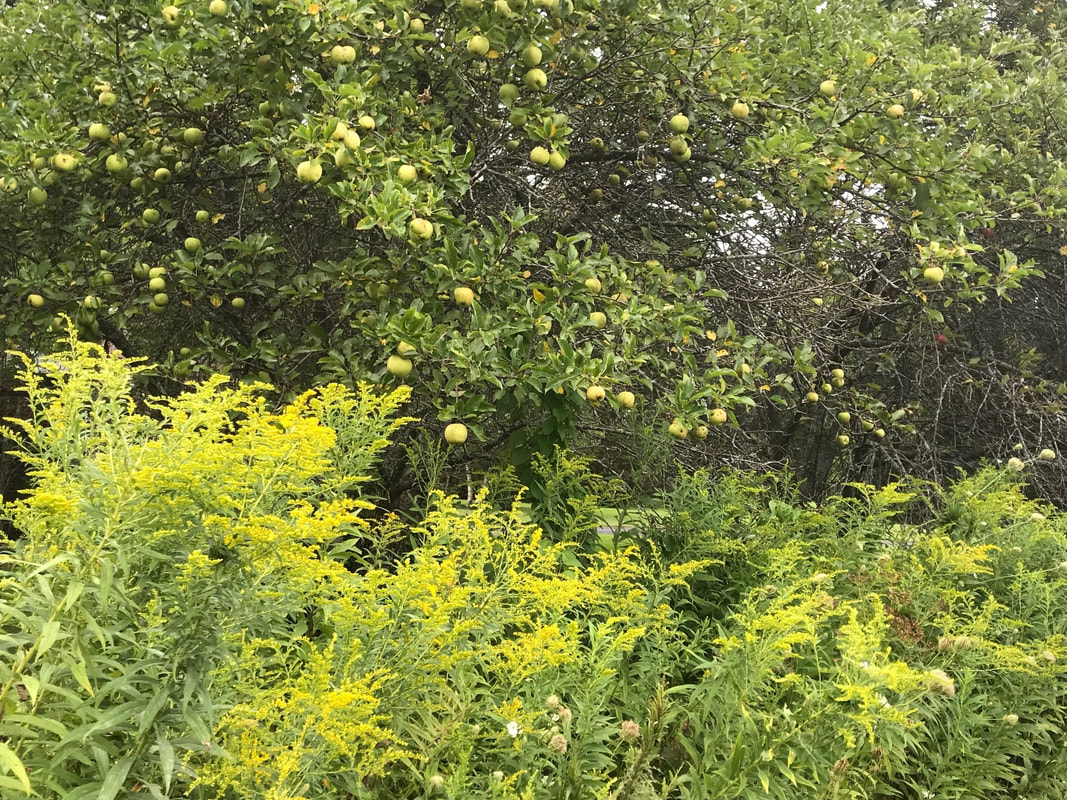 However imperceptible day-to-day, nature’s seasons are always changing, until one day it becomes apparent. In these waning days of August I have noticed how twilight comes earlier. To quote Emily Dickinson, “The Dusk drew earlier in”. As I walk around the City, I see increasing hints of what is to come. Not only does the sun sets earlier; we encounter more frequent cooler days—welcome refuge from debilitating heat, yet also a reminder of waning summer—and a few leaves are starting to change colors, with tinges of yellow now mixed in with deep greens. Here and there, an occasional yellow leaf floats to the ground. With these early harbingers of Autumn come the awareness of the changes that loom in our human ordering of time, conventions and rituals that align with nature’s cycles. Though seemingly removed from nature in our built environments, with temperatures regulated by air conditioning and heating system and artificial light tricking our circadian rhythms, our bodies unavoidably sense the changes in nature around us. People fortunate to vacation out of town return home, packing away beach chairs and flip flops. Children return to school. It will soon be time to exchange shorts and tee shirts for sweaters and other warmer clothing, and work has a way of ramping up. Like the harvest season that is to come, our energies shift from a state of greater languor (why hurry when it will be light out until 9:00?) to a feeling that it is time to hunker down and focus more fully on work – even for those of us working full time through the summer. But as Dickinson’s poem suggests, with the waning of Summer, and the Summer’s waning light, we transition not into grief but rather, with the coming of Autumn, another season of beauty. As Imperceptibly as Grief By Emily Dickinson As imperceptibly as Grief The Summer lapsed away – Too imperceptible at last To seem like Perfidy – A Quietness distilled As Twilight long begun, Or Nature spending with herself Sequestered Afternoon – The Dusk drew earlier in – The Morning foreign shone – A courteous, yet harrowing Grace, As Guest, that would be gone – And thus, without a Wing Or service of a Keel Our Summer made her light escape Into the Beautiful.
0 Comments
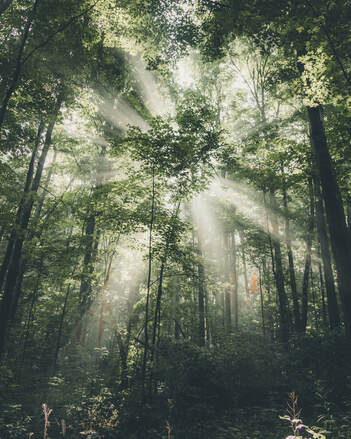 Photo by Maxx Gong on Unsplash Photo by Maxx Gong on Unsplash With longer daylight hours and more time spent outdoors in the warmer air, Summer offers an opportunity to consider the play of sunlight and how it interacts with other natural features. Consider the magical, filtered light of the sun distilled through a canopy of trees. Shafts of light beam down like spotlights, capturing particles moving in the air. The light feels awe-inspiring and effervescent. The Japanese have a word for this: "komorebi". Consider too how sunlight interacts with water. If you find yourself near a body of water--one of New York City’s beaches, like Coney Island/Brighton Beach, the Rockaways, or Orchard Beach, a pond or lake, or even a pool (I am a great fan of NYC’s public pools, like the one at John Jay Park), take note of the light and its dazzling, crystalline clarity. Observe how it reflects off the surface of the water, and how the reflecting changes if the water is still or choppy. Slices of light--patches and dancing light--offer a full-on light show. Notice how the light reflects off the water onto nearby objects--rocks, trees, and other surfaces, offering shimmering reflections of continual movement, with almost cinematic effect, like an experimental film. If immersed in the water, notice how the light filters through the water--a variation of komorebi?--and the shadows on the bottom. Shape-shifting forms moving with the smallest of waves connect the features of light and water. Even raindrops gathered on tree leaves and branches offer a dynamic show as light filters through these tiny translucent reflecting chambers, like small mirrors or lights. Take a moment during these Summer days to notice the light shows around you. 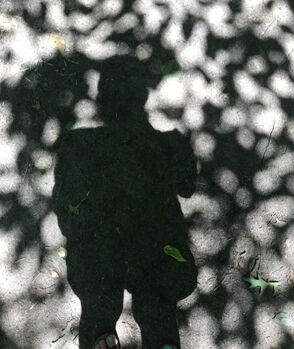 My "shadowflection" in Forest Park, Queens My "shadowflection" in Forest Park, Queens Shadows evidence physical presence--the instantiation of our bodies and of other creatures and structures. Bathed in daylight, our corporeal forms have the power to block the Sun's rays and cast dark reflections on the ground, what David Abram calls our "shadowflection". Even nighttime, as Abram notes, is nothing other than a hemisphere of the Earth enveloped in its own shadow. So too, shadows remind us of the sun's presence, and our position relative to it as we stand upon the Earth, our orbital home in continual motion. As the Sun migrates from low on the eastern horizon in the morning, to overhead, to low on the western horizon in the evening, our shadowflections shapeshift by the hour and season. Transitioning from elongated versions of ourselves, as if we were giants standing on the earth, to squat, to long again, they remind us of the continual motion of the Earth relative to the Sun, and perhaps other cycles and changes our bodies experience over the cycles of days, months, and years. And far more than a two-dimensional surface-restricted image, shadows have three-dimensional depth. Writes Abram in Becoming Animal: "My actual shadow is...more substantial than that flat shape on the paved ground. That silhouette is only my shadow's outermost surface. The actual shadow does not reside primarily on the paved ground; it is a voluminous being of thickness and depth, a mostly unseen presence that dwells in the air between my body and that ground. With the summer sun high in the sky, it is prime time for shadowflections, reminders of the our ever-present connection with the Sun, as the Earth turns and turns. 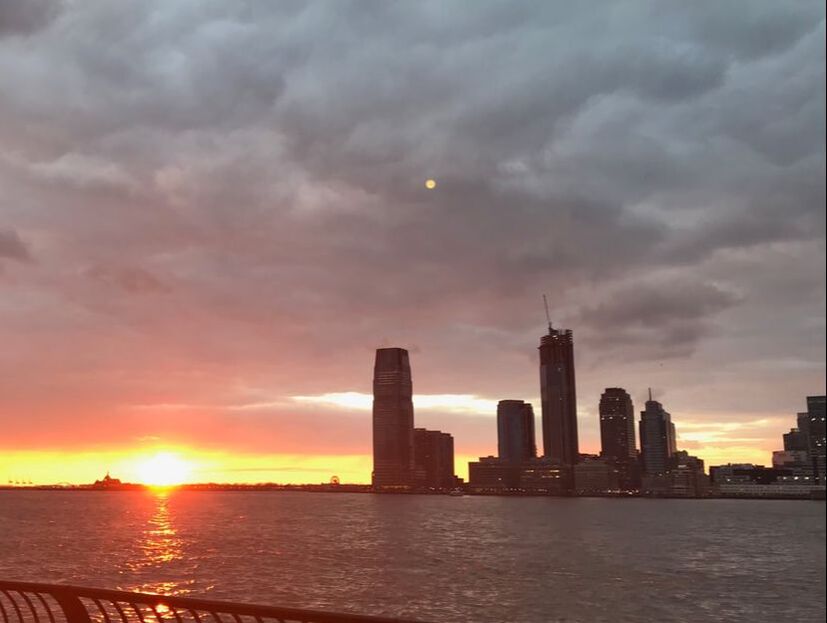 Sun, moon, Hoboken, and the Hudson Sun, moon, Hoboken, and the Hudson Summer solstice, when the sun reaches its highest point in the sky, is an opportunity to connect with cyclical changes and embrace the bounty of nature around us. Summer is upon us, a time of abundant growth. The day that provides the most light, it is perhaps then a time for enhanced clarity and insight as well as chance to appreciate the world's plenitude. Derived from the Latin words "sol" (sun) and "sistere" (to make stand), the word "solstice" connotes an inflection point, a moment when what is before differs from what is after, as is fitting for the day that marks a shift from the sun progressing northward to tracking southward and with this a shift from lengthening daylight hours to shortening daylight hours. Humans have a rich traditions honoring the summer solstice. Ancient Northern and Central European pagans--including Germanic, Celtic and Slavic tribes--celebrated Midsummer with bonfires, which were thought to enhance the sun’s energy and promote a good harvest for the fall. Early Christians celebrated the day as St. John's Day, commemorating the birth of John the Baptist. The Great Pyramids of Egypt are situated such that, from the viewpoint of the Sphinx, the sun sets directly between two of the pyramids on the summer solstice. The ancient Chinese regarded the summer solstice as connected with the feminine force “yin,” and celebrated with festivities honoring Earth, femininity. The Mayans of Central America built structures to align with the sun's solstice path. And many Native American tribes engaged in solstice rituals, some of which continue to be practiced. The Sioux sun dance entails cutting and raising a tree as a symbolic connection between the heavens and Earth, placing teepees in a circle to represent the cosmos., and participants decorating their bodies in colors of red (sunset), blue (sky), yellow (lightning), white (light), and black (night). While many ancient cultures were attuned to the sun's cycles and engaged in solstice rituals, contemporary urban dwellers may fell less connected to this astronomical happening. But as entrenched as we may be in our day-to-day lives, the eternal dance between the Sun and Earth continues, a reminder of the extent of time beyond humanity and forces that are bigger than ourselves. 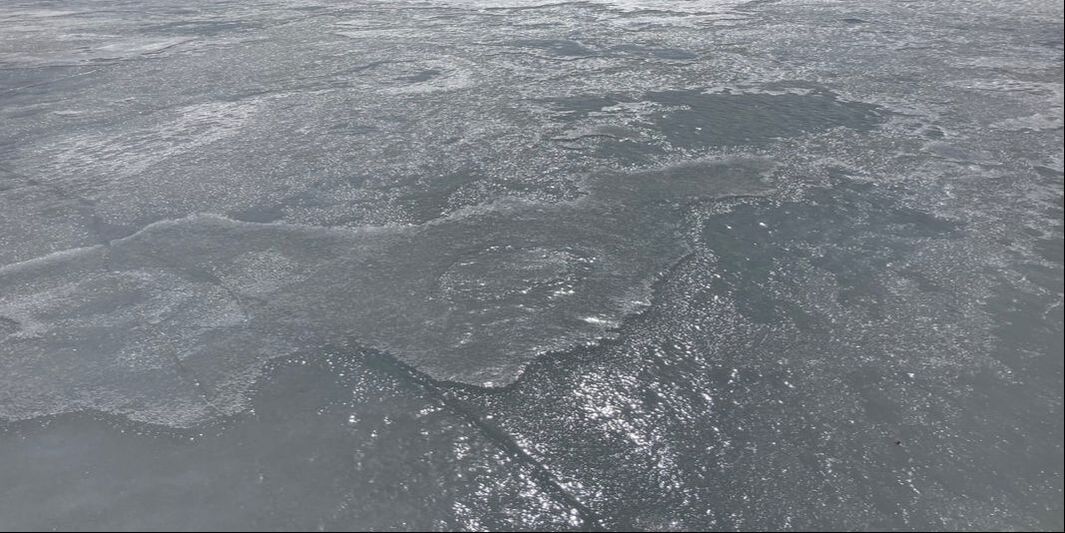 Heightened attention to early flower blooms, described in my previous blog, has awakened my visual awareness and made me more attuned to forms and structures everywhere. Lately I've been particularly attuned to surfaces. By "surfaces" I mean the outermost layer, perceived by sight and touch--boundaries and edges that define, separate, and connect. Consider the many ways to describe surfaces, the characteristics that define them, to name a few: smooth, rough, patterned, textured, hard, soft, straight, curved, color, symmetrical, matte, shiny, reflective. And often, surfaces become all the more intricate the closer one looks. What appears as smooth may in fact be comprised of grooves and particles, with infinite complexity. City life offers an opportunity to notice the surfaces of our built environment, the geometric, smooth facades of buildings, sidewalks, stairways, and interior spaces--walls, floors, ceilings, furniture. What a contrast these views are to the undulating, uneven and surprising surfaces of the natural environment, of trees, flowers and shrubs growing along streets and in parks, of rocks and water. Some say that the "Euclidean geometry" of our built environment impairs our "visual fluency", that we innately crave the visual complexity offered by natural environments, visual fields that feed our brains' ability to absorb complexity. Yet, it is worth considering that the materials that create our built environment derive from natural materials: wood harvested, stones gathered and cut, and metals mined and smelted, transformed from their natural state to be put to our use. On a micro-level, their true natural forms become apparent: the cellular structure of wood, and crystalline structure of metals and rocks. What began as an ordinary day transformed into sensory adventure as I tuned into the surfaces around me. 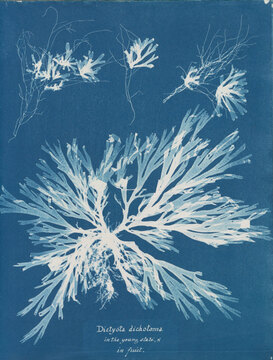 Luminescent, intricate photographic renderings of botanical forms -- "British Algae", otherwise known as seaweed -- appear in light blue and white against a darker blue background. This is the work of Anna Atkins, a long-obscured 19th Century botanist, artist, and pioneer in the application of photography to science. Atkins's work is on display through February 17 at the New York Public Library, Atkins applied the process of cyanotype, a cameraless photographic method utilizing light-sensitive paper to create in 1843 the first book illustrated exclusively with photographs. She donated the book, Photographs of British Algae: Cyanotype Impressions, the Royal Society and dedicated it to her father, John Children, a fellow at the Royal Society. Children was friends with John Herschel, an astronomer and early photographic pioneer, who invented cyanotype in 1842 and introduced Atkins to the photographic medium. Atkins's application of photography to capture botanical images was a leap forward for scientific advancement. As noted in the NYPL exhibit: "In Renaissance Europe, artists' renditions exploded in popularity as the need arose for repeatable visual information to complement the printed word. The marked rise in the level of scientific inquiry from the 17th century forward paralleled a growing sophistication n these drawings and improved methods of distributing them. Among the most socially useful applications of art and science was the herbal, a genre of reference book on plants that describes their appearance as well as their medicinal, culinary or toxic properties. The hand of the artist, however, was not always in sync with the eye of the scientist, Rare was the individual who could reconcile the two. Difficulty emerged when the artist could not comprehend- or perhaps wasn't sympathetic to--the kind of information of greatest value to the botanist. Before British Algae, the only pictorial catalogues of botanical collections were illustrations with hand-rendered artists' impressions, or sometimes with actual dried plants affixed to their pages." The NYPL exhibit, the first dedicated to a full representation of Atkins's productions, not only offers insights into the history of photography and its application to science by a daring and innovative female scientist of the Victorian era, when gender roles usually relegated women to the domestic sphere. It also depicts flora in stunning detail and in ways that highly their exquisite beauty and symmetry. If cold weather is giving you the blues, step inside the NYPL to discover nature's blue prints. 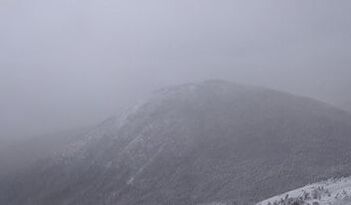 You emerge from a day’s work at the office into darkness. Just a few months ago, hours of light remained, time for an after work softball game, or a picnic or stroll in the park. Whereas darkness covered New York City as late as 9:00 during the summer, with our turning the clock back an hour last week sunset arrives now close to 4:30. And how different does this change in daylight hours feel! Darkness obscures, and with nearly 80 percent of human’s sensory awareness coming from sight, the diminished light can reduce our understanding of the world around us and induce fear. Consider the nocturnal demons of folklore—witches, ghosts, and other creatures. Indeed, “nightmare” derives from the Germanic and Slavic folklore’s concept of the “mare”, a malicious creature that rides on people chests while they sleep and brings them bad dreams. Yet, if darkness diminishes visual awareness, it can heighten other sensory awareness. Touch is felt more acutely, as in the feeling of chilled air on one’s face, and the awareness of pavement underfoot with every step. One’s sense of proprioception, how our bodies move through space, is heightened to the point where running in the darkness can evoke a sensation of rhythmic floating. Hearing too is heightened. Wind blowing through the trees is heard more clearly than it likely would be in broad daylight. We hear our footsteps and those of others. So too, insight intensifies, even in how dreams bring wisdom. And, in fact, our eyes do function in the darkness, even in the absence of street lamps. There is much was can see and discern as we let our eyes adjust and overcome fear of the darkness. With even a little moonlight, we can see the outlines of trees against the sky, the vegetation around us, and the path ahead of us. In just over a month we will arrive at the winter solstice, and the daylight hours will grow longer, just as we enter into the depths of winter, a strange equipoise: winter’s emerging chill concurrent with the days’ growing light, and six months later, summer’s emerging warmth concurrent with the days’ diminishing light. We Grow Accustomed to the Dark Emily Dickinson We grow accustomed to the Dark - When light is put away - As when the Neighbor holds the Lamp To witness her Goodbye - A Moment - We uncertain step For newness of the night - Then - fit our Vision to the Dark - And meet the Road - erect - And so of larger - Darknesses - Those Evenings of the Brain - When not a Moon disclose a sign - Or Star - come out - within - The Bravest - grope a little - And sometimes hit a Tree Directly in the Forehead - But as they learn to see - Either the Darkness alters - Or something in the sight Adjusts itself to Midnight - And Life steps almost straight. 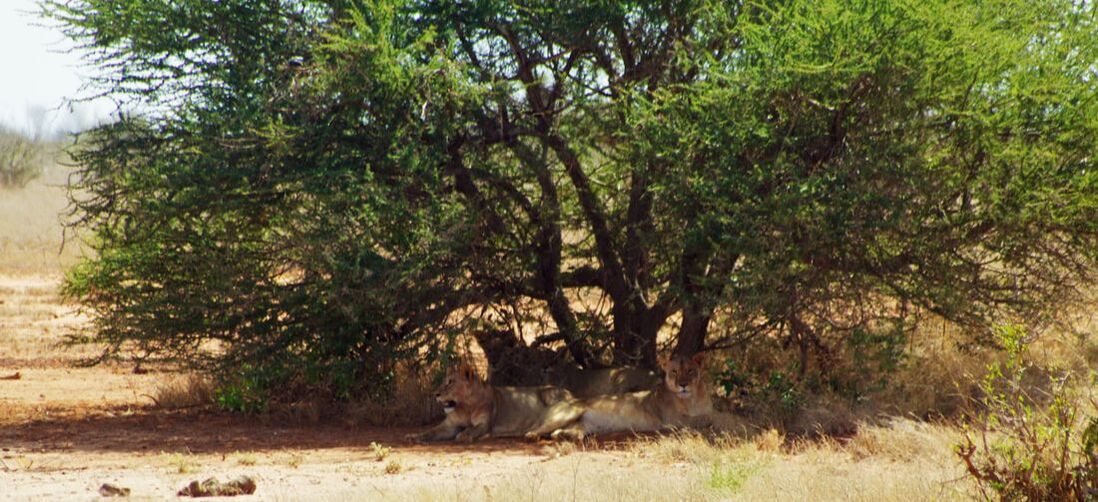 McKay Savage from London, UK, CC BY 2.0 (cropped from original) McKay Savage from London, UK, CC BY 2.0 (cropped from original)If Manhattanhenge, discussed in my prior blog, broadcasts the relationship between Manhattan’s street grid and the sun’s seasonal path, summer’s heat pushes us to respond to the sun’s path with innate astronomical awareness in our daily lives. With summer in full blast, the sun’s heat radiates off sidewalks and buildings and intensifies the temperature. As a walker in Manhattan, whether for pleasure, errand running, or as part of my daily commute, I often assess what side of a street is better shaded, and choose that side for my walk. With the longer stretches of my walk extending in a north-south/south-north direction, this means walking on the east side of an avenue in the morning and the west side in the evening. The difference in temperature is significant. Winter brings the opposite effect: seeing out the sunnier side of the street for greater warmth and light. Orientation to the sun has figured in town and city planning for centuries, typically as a way to enhance warmth and light long before the development of modern heating and lighting systems. Notably, in 1916 New York City passes a zoning resolution to preserve sunlight at street level, recognizing sunlight as a public good. At the time, buildings were limited in height—and sun-blocking effects—by engineering capabilities. With continual improvements in elevators and the use of steel frame structures, building height have multiplied, impacting street-level sunlight. At the same time, urban landscape materials—asphalt, metal, and dark buildings—absorb more sunlight than forests, fields, and snow-covered terrain, resulting in an “urban heat island”, were a city’s temperature is significantly warmer than in surrounding areas. New York City’s heat island effect is most felt at night, when the temperature is 5 to 7 degrees warmer than in surrounding areas. Scientists and urban planners have considered how attention to the interplay of urban structures and sunlight can enhance energy conservation by cooling the city. NASA determined that dark, sunlight absorbing black roofs in New York City reached 170 degrees on July 22, 2011, a peak day in a heat wave that resulted in a city record for electricity usage. By contrast, white roofs were 42 degrees cooler. This led to the widespread installation of white roofs, with the aim of decreasing electricity usage and reducing city temperatures. While not as extreme as the impact of roof-top lightening, a shift from the sunny to the shaded side of a city street in the middle of Julycan offer a welcomed refuge. If you find yourself wandering down a city street during the heat of summer, think about how you intuitively position yourself for cooling comfort. We’re not so different from other animals in this way!  Sevtibidou, CC BY-SA 3.0 Sevtibidou, CC BY-SA 3.0 The sun will set on Thursday and Friday, July 12 and 13, as usual, if it can be said that a sunset is ever “usual”, with endless variations in moisture, temperature, season, cloud cover, axis of the earth relative to the sun, and even air pollution making every sunset unique. Those of us living in Manhattan will experience a particularly spectacular astronomical phenomenon: Manhattanhenge. Manhattanhenge occurs twice a year, in late May and early July, when the setting sun is perfectly aligned with the grid of New York City streets. It is the continually changing relative axis of the earth to the sun that results in Manhattanhenge. From the first day of winter until the first day of summer, the sun sets increasingly north on the horizon. And, it sets incrementally southward on the horizon from the first day of summer until the first day of winter, rising and setting due east and west only on the spring and fall equinoxes (the first days of spring and fall). With the Manhattan street grid--a design proposed in 1811--tilted at 30 degrees east of due north, rather than exactly aligned north-south/east-west, the alignment of the sunset with our street grid occurs off-calendar from the equinox. According to the American Museum of Natural History, "For best effect, position yourself as far east in Manhattan as possible. But ensure that when you look west across the avenues you can still see New Jersey. Clear cross streets include 14th, 23rd, 34th. 42nd, 57th, and several streets adjacent to them. The Empire State building and the Chrysler building render 34th street and 42nd streets especially striking vistas." Full sun on the grid will take place at 8:20 on Thursday, and half sun on the grid will take place at 8:21 on Friday. Think about observing this local phenomenon, how it can remind us of our relative place in the universe and the continual, awe-inspiring cycles that intersect the chasms of our very human-driven metropolis. 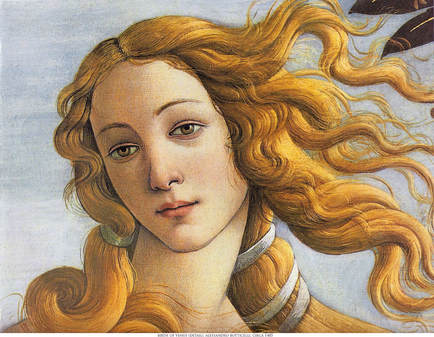 As I hope came across in my previous blog, I had a magical time looking up at the sky from the roof of my building a few days ago. A few evenings later, after a day of work followed by dinner with my daughter, I ventured up there again, a perfect way to enjoy time outside while still being close to home. It was twilight when I arrived, and the breeze made the world feel open and alive, a contrast to the cozy yet restricted feeling within the walls of my apartment. Glancing around, I notice a faint light in the sky to the west. Venus? Or was it a satellite? No, it wasn't moving like a satellite. And it was too early and too bright to be a star. It was Venus, second planet from the Sun, named after the Roman god of beauty and love. Content to be in the open air, I lingered for over an hour. When I looked toward Venus some time later, it was lower in the horizon. Venus was setting. Meanwhile, in the southeast sky the full moon peeked out behind a nearby building. And with the darkening sky, faint stars started to appear overhead, mirrored far below by human-made star clusters of apartment lights. I thought about the vastness of our galaxy, the recent discovery of countless other galaxies, and how throughout the history of humankind we have charted the heavens, navigated by them, formed mythologies around them. Venus was the first planet whose motions were plotted across the sky, in the second millennium B.C. And yet here, in a city where the strength of human-made lumens blocks out so much of the visible night sky, and where our own sense of importance--the towers we build ever higher--too often overshadows our awareness of the natural world, we often forget the continual celestial activity happening around us. Enraptured by cosmic happenings, I was jarred back into the world of New York, New York 2018 by an argument erupting between a couple on a balcony of a nearby building: She: "Why does it always have to be about you!" He: "I just need some down time after work. I'm tired. It's been a long day!" She: "I'm tired too. I need down time too! " There on the very plain roof of my very ordinary building, in counterpoint and like a grand joke, was the full scope of Venus in action: Our need to feel supported by the people dear to us and the disconnect we often feel with them. Our hunger for understanding and love. The urgency of our feelings. And meanwhile, the earth spins round and round, the moon orbits the earth ever changing in its phases, and Venus and the sun rise and set as they have for eons, long before we ever walked this earth, long before there was a "you", long before there was an "I". To the Evening Star by William Blake 1789 Thou fair-hair'd angel of the evening, Now, while the sun rests on the mountains, light Thy bright torch of love; thy radiant crown Put on, and smile upon our evening bed! Smile on our loves; and, while thou drawest the Blue curtains of the sky, scatter thy silver dew On every flower that shuts its sweet eyes In timely sleep. Let thy west wind sleep on The lake; speak silence with thy glimmering eyes, And wash the dusk with silver. Soon, full soon, Dost thou withdraw; then the wolf rages wide, And the lion glares thro' the dun forest: The fleeces our flocks are cover'd with Thy sacred dew: protect them with thine influence. |
About this Blog
Hi! I'm Nancy Kopans, founder of Urban Edge Forest Therapy. Join me on an adventure to discover creative ways to connect with nature in your daily life, ways that are inspired by urban surroundings that can reveal unexpected beauty, with the potential to ignite a sense of wonder. Archives
April 2023
Categories
All
|


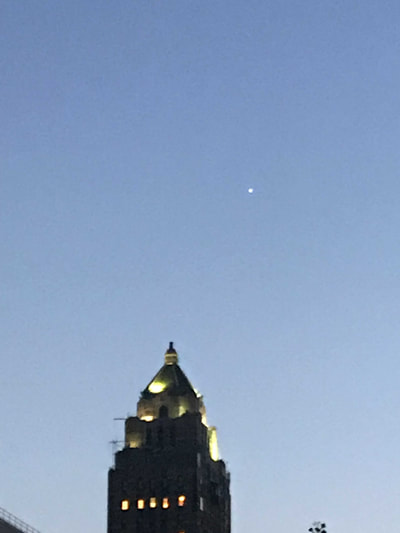
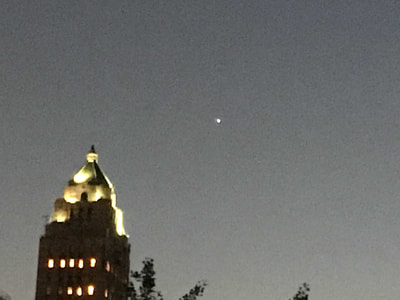

 RSS Feed
RSS Feed